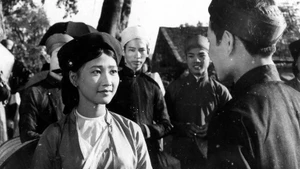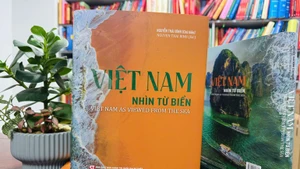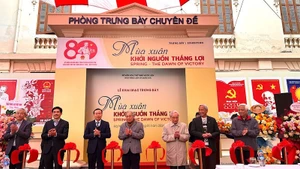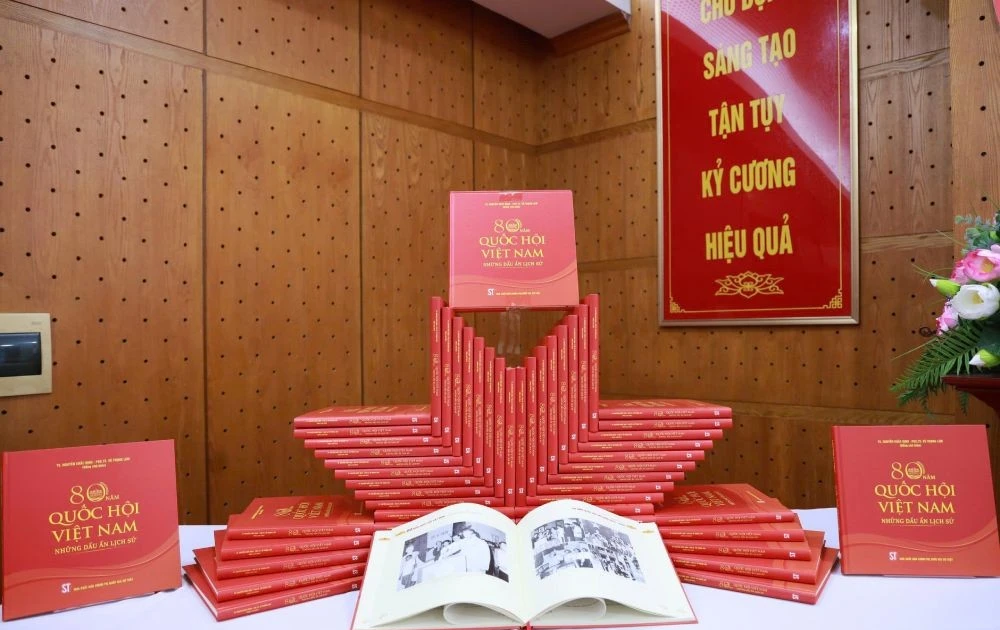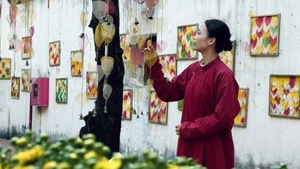The craft of conical hat making has been practiced in Thua Thien Hue for centuries. It has still well preserved today in Tay Ho village, Phu Ho commune; My Lam village, Phu My commune; and the villages of Phu Cam, Phuoc Vinh, Doc So, Trieu Tay, and Huong So in Hue city.
Craftsmen in the village sell millions of conical hats to the market every year, not only meeting the needs of the local people, but also providing an attractive souvenir for visitors to Thua Thien Hue province.
Thanks to its unique traditional cultural value, the Hue conical hat is the first handicraft product in Hue to be granted registration certificates of geographical indication by the Intellectual Property Office of Vietnam under the Ministry of Science and Technology in August 2010.
In addition to the typical three-layer conical hats made from palm leaves, local artisans also use leaves from the lotus, bamboo, and Indian-almond trees as materials to produce conical hats.
With their talented hands, Vo Ngoc Hung and his wife, in Kim Long ward, Hue city, turn the leaves of Indian-almond trees into charming conical hats. Meanwhile, in Doc So village, An Hoa ward, Hue city, young Nguyen Thanh Thao succeeds in making conical hats from lotus leaves. Thao’s product won A prize in a start-up innovation competition in Thua Thien Hue province in 2017.
However, the craft of conical hat making and its practitioners are facing many challenges.
A survey conducted in My Lam village in Phu Vang district showed that in the past, more than 300 households in the village earned their living from hat making, but now less than 20 women still keep the practice, with most of them being the elderly. In Phu Ho commune, Phu Vang district, the craft is still practiced in only 15 households.
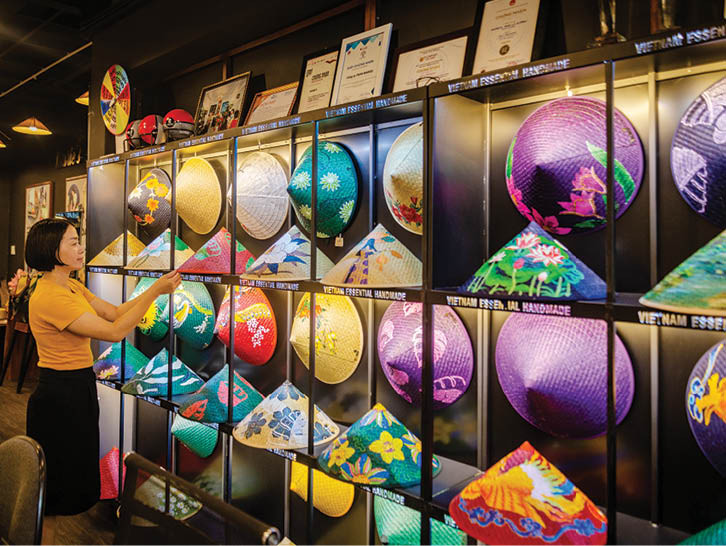 |
| Hue artisans also use leaves from the lotus, bamboo, and Indian-almond trees as materials to produce conical hats. (Photo: baothuathienhue.vn) |
The decrease in the number of practitioners can be attributed to a low and unstable income of only around 30,000-50,000 VND for a working day, making many people quit this job. Another reason is that the market for conical hats in Thua Thien Hue is still not stable. Even at Dong Ba market, a big market in the city centre and a major hub for traders of Hue conical hats, the proportion of Hue-made conical hats accounts for only 10-20%, while the majority of conical hats are imported from Quang Binh and Binh Dinh provinces.
A seminar was recently held under the theme ‘Current situation and solutions for the sustainable development of Hue conical hats’ by the Friedrich Naumann Foundation for Freedom (FNF) Vietnam the Hue Conical Hat Association.
Participants at the event suggested the launch of tours to the craft village, and the establishment of exhibition centres where visitors can explore the process of making the product. They also called for further financial support to organise trade promotion and communication activities to advertise Hue conical hats, and improve vocational training for local practitioners.
Director of the Thua Thien Hue provincial Tourism Department Nguyen Van Phuc stressed that the local authorities attach great importance to integrating the safeguarding of traditional crafts with tourism development. He explained that the development of tourism in craft villages not only generates greater incomes for locals but also contributes to diversifying the tourist products of the locality.
A Hue Conical Hat Association was established to help its members coordinate with hotels and travel agencies to introduce conical hats at tourist attractions as souvenirs.
According to the association’s Vice President Pham Thi Lan, the association will also work to sign cooperation agreements with the management board of local markets in Hue city, especially Dong Ba market, to encourage the market traders to prioritise purchasing products made by the association’s members.
In the coming time, Thua Thien Hue province will foster the application of information technology and digitalisation in developing the brand of Hue conical hats. The province also plans to open an exhibition centre on conical hat making to further promote the craft to visitors to the locality.


